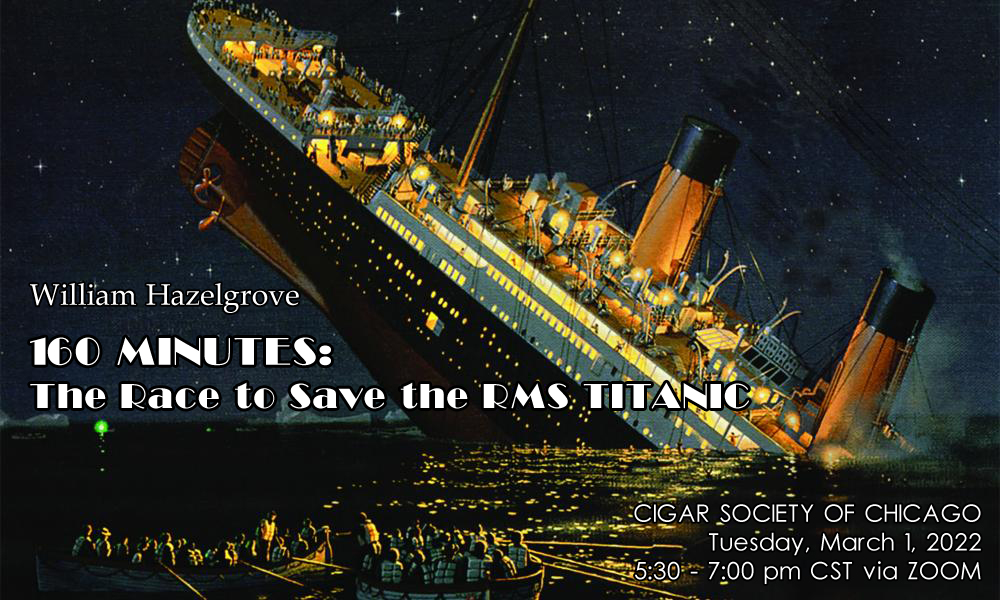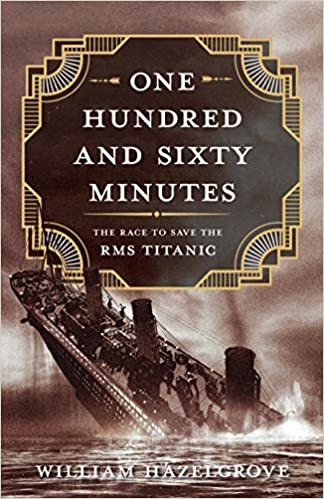 |
presents
|
|

|
|
 One hundred and sixty
minutes. One hundred and sixty
minutes.
That is all the time rescuers would have
before the largest ship in the world
slipped beneath the icy Atlantic. There
was amazing heroism and astounding
incompetence against the backdrop of the
most advanced ship in history sinking by
inches with luminaries from all over the
world. It is a story of a network of
wireless operators on land and sea who
desperately sent messages back and forth
across the dark frozen North Atlantic to
mount a rescue mission. More than
twenty-eight ships would be involved in
the rescue of Titanic survivors
along with four different countries.
At the heart of the rescue are two young
Marconi operators, Jack Phillips 25 and
Harold Bride 22, tapping furiously and
sending electromagnetic waves into the
black night as the room they sat in
slanted toward the icy depths and not
stopping until the bone numbing water was
around their ankles. Then they plunged
into the water after coordinating the
largest rescue operation the maritime
world had ever seen and thereby saving 710
people by their efforts. The race to save
the largest ship in the world from certain
death would reveal both heroes and
villains. It would begin at 11:40 PM on
April 14, when the iceberg was struck and
would end at 2:20 AM April 15, when her
lights blinked out and left 1500 people
thrashing in 25-degree water. Although the
race to save Titanic survivors
would stretch on beyond this, most people
in the water would die, but the amazing
thing is that of the 2229 people, 710 did
not and this was the success of the Titanic
rescue effort.
We see the Titanic as a great
tragedy but a third of the people were
rescued and the only reason every man,
woman, and child did not succumb to the
cold depths is due to Jack Phillips and
Harold Bride in an insulated telegraph
room known as the Silent Room. These
two men tapping out CQD and SOS distress
codes while the ship took on water at the
rate of 400 tons per minute from a
three-hundred-foot gash would inaugurate
the most extensive rescue operation in
maritime history using the cutting-edge
technology of the time, wireless.
|
|
Rick Kogan, in
his lengthy review of the book in the
Chicago Tribune, wrote: "Hazelgrove
is a sociable historian, writing in a style
closer to breezy conversation than droning
academia, and not at all reluctant to share
his enthusiasm for his subjects. He has done
this in previous books about such colorful
characters as Teddy Roosevelt, Al Capone,
Edith Wilson, the Wright Brothers and Sally
Rand.
"One might think that we know all there is
to know about that April 14, 1912 story, but
Hazelgrove, an energetically curious man,
has unearthed a compelling and exciting
story and effectively pokes holes in some of
the persistent myths surrounding the
tragedy.
"This book was born of his own fascination
with the Titanic and after diving
deep into the history and the myths, he
writes, 'And if we are in the business of
breaking up myths surrounding the night the
Titanic sunk then we might as well
put this out there. It was a success. This
goes against all the known thought, theory,
extrapolation, judgment, revisionism, books,
testimonials, movies and dreams.'”
|
|
 William
Hazelgrove is well known to the Cigar
Society for his talks about
Sally Rand: American Sex Symbol;
Henry
Knox's Noble Train; Wright
Brothers, Wrong Story: How Wilbur Wright
Solved the Problem
of Manned Flight; Forging
a President: How the Wild West Created
Teddy Roosevelt; Al
Capone and the 1933 World's Fair;
and Madame President:
The Secret Presidency of Edith Wilson. William
Hazelgrove is well known to the Cigar
Society for his talks about
Sally Rand: American Sex Symbol;
Henry
Knox's Noble Train; Wright
Brothers, Wrong Story: How Wilbur Wright
Solved the Problem
of Manned Flight; Forging
a President: How the Wild West Created
Teddy Roosevelt; Al
Capone and the 1933 World's Fair;
and Madame President:
The Secret Presidency of Edith Wilson.
Mr. Hazelgrove is the national bestselling
author of ten novels and ten nonfiction
titles. His books have received starred
reviews in Publisher Weekly, Kirkus,
Booklist, Book of the Month Selections, ALA
Editors Choice Awards Junior Library Guild
Selections, Literary Guild Selections,
History Book Club Selections and optioned
for the movies. He was the Ernest Hemingway
Writer in Residence where he wrote in the
attic of Ernest Hemingway’s birthplace. He
has written articles and reviews for USA
Today, The Smithsonian Magazine, and other
publications and has been featured on NPR
All Things Considered. The New York Times,
LA Times, Chicago Tribune, CSPAN, USA Today
have all covered his books with features. |
|
FREE and ONLINE
Tuesday, March 1, 2022
5:30-7:00 pm CST |
|
Sign in
5:00-5:30 pm Central Time for informal
cigar and cocktail chatter.
The event will be called
to order at 5:30.
There will be a Q&A session following
the lecture. Audience participation is
invited.
The event will be adjourned 7 pm.
An optional cocktail party and discussion
will continue after the event.
Be sure to have your cocktails and
cigars at ready hand.

After you register,
look for Order Confirmation email
from Eventbrite. Scroll to the
bottom of the message for a link to the
video conference, and other instructions.
From the Order Confirmation email you can
also save the event to your online
calendar and later join the video
conference from the link automatically
provided in the calendar entry. |
|
|
About
the
Cigar Society of Chicago
ONE OF THE OLDEST
AND greatest traditions of the
city clubs of Chicago is the
discussion of intellectual,
social, legal, artistic,
historical, scientific, musical,
theatrical, and philosophical
issues in the company of educated,
bright, and appropriately
provocative individuals, all under
the beneficent influence of
substantial amounts of tobacco and
spirits. The Cigar
Society of Chicago
embraces this tradition and
extends it with its Informal
Smokers, University
Series lectures, and Cigar
Society Dinners, in which
cigars, and from time to time
pipes and cigarettes, appear as an
important component of our version
of the classical symposium. To be
included in the Cigar Society's
mailing list, write to the
secretary at
curtis.tuckey@logicophilosophicus.org
|
|
|
|